Indigenous Philippine folk religions
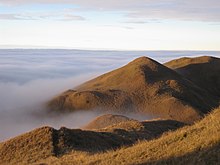
Indigenous Philippine folk religions are the distinct native religions of various
The profusion of different terms arises from the fact that these
The folklore narratives associated with these religious beliefs constitute what is now called
Religious worldview

Historian T. Valentino Sitoy, in his review of documents concerning pre-Spanish religious beliefs, notes three core characteristics which shaped the religious worldview of Filipinos throughout the archipelago before the arrival of Spanish colonizers. First, Filipinos believed in the existence of parallel spirit world, which was invisible but had an influence on the visible world. Second, Filipinos believed that there were spirits (anito) everywhere - ranging from the high creator gods to minor spirits that lived in the environment such as trees or rocks or creeks. Third, Filipinos believed that events in the human world were influenced by the actions and interventions of these spirit beings.[3]
Anito were the
When Spanish missionaries arrived in the Philippines, the word "anito" came to be associated with the physical representations of spirits that featured prominently in paganito rituals. During the American rule of the Philippines (1898–1946), the meaning of the Spanish word idolo ("a thing worshiped") has been further conflated with the English word "idol", and thus anito has come to refer almost exclusively to the carved figures or statues (taotao) of ancestral and nature spirits.[7][10]
The belief in anito is sometimes referred to as
Deities and spirits
Creator gods in Filipino religions
Many Indigenous Filipino cultures assert the existence of a high god, creator god, or sky god.[4] Among the Tagalogs, the supreme god was known as Bathala, who was additionally described as Maykapal (the all-powerful) or Lumikha (the creator). Among the Visayan peoples the creator God is referred to as Laon, meaning "the ancient one." Among the Manuvu, the highest god was called Manama. Among most of the Cordilleran peoples (with the Apayao region as an exception), the creator and supreme teacher is known as Kabuniyan.[4]
In most cases, however, these gods were considered such great beings that they were too distant for ordinary people to approach.[2] People thus tended to pay more attention to "lesser gods" or "assistant deities" who could more easily approached, and whose wills could more easily be influenced.[2][4]
"Lower gods" in Filipino religions
Lesser deities in Filipino religions generally fit into three broad categories: nature spirits residing in the environment, such as a mountain or a tree; guardian spirits in charge of specific aspects of daily life such as hunting or fishing; and deified ancestors or tribal heroes. These categories frequently overlap, with individual deities falling into two or more categories, and in some instances, deities evolve from one role to another, as when a tribal hero known for fishing becomes a guardian spirit associated with hunting.[4]
Concept of the soul
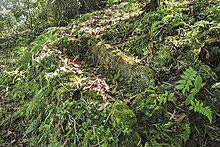
Each ethnic group has their own concept and number of the soul of a being, notably humans. In most cases, a person has two or more souls while he or she is alive. The origin of a person's soul have been told through narratives concerning the Indigenous Philippine folk religions, where each ethnic religion has its unique concept on soul origin, soul composition, retaining and caring for the soul, and other matters, such as the eventual passage of the soul after the person's life is relinquished. In some cases, the souls are provided by certain deities such as the case among the Tagbanwa, while in others, the soul comes from certain special regions such as the case among the Bisaya. Some people have two souls such as the Ifugao, while others have five souls such as the Hanunoo Mangyan. In general, a person's physical and mental health contribute to the overall health of the person's souls. In some instances, if a soul is lost, a person will become sick, and if all living souls are gone, then the body eventually dies. However, there are also instances in which the body can still live despite the loss of all of its souls, such as the phenomenon called mekararuanan among the Ibanag. Overall, caring for one's self is essential to long life for the souls, which in turn provide a long life to the body.[4][12][13][14][15]
Ghosts or ancestral spirits, in a general Philippine concept, are the spirits of those who have already died. In other words, they are the souls of the dead. They are different from the souls of the living, in which, in many instances, a person has two or more living souls, depending on the ethnic group.[15] Each ethnic group in the Philippine islands has their own terms for ghosts and other types of souls.[15] Due to the sheer diversity of Indigenous words for ghosts, terms like espirito[15] and multo, both adopted from Spanish words such as muerto, have been used as all-encompassing terms for the souls or spirits of the dead in mainstream Filipino culture.[16] While ghosts in Western beliefs are generally known for their sometimes horrific nature, ghosts of the dead for the various ethnic groups in the Philippines are traditionally regarded in high esteem. These ghosts are usually referred to as ancestral spirits who can guide and protect their relatives and community,[11] though ancestral spirits can also cast harm if they are disrespected.[15] In many cases among various Filipino ethnic groups, spirits of the dead are traditionally venerated and deified in accordance to ancient belief systems originating from the Indigenous Philippine folk religions.[17]
Important symbols
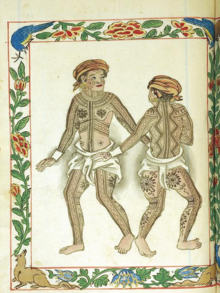
Throughout various cultural phases in the archipelago, specific communities of people gradually developed or absorbed notable symbols in their belief systems. Many of these symbols or emblems are deeply rooted in indigenous epics, poems, and pre-colonial beliefs of the natives. Each ethnic group has their own set of culturally important symbols, but there are also "shared symbols" which has influenced many ethnic peoples in a particular area. Some examples of important Anitist symbols are as follow:
- okir – a distinct mark of cultural heritage of the now-Muslim peoples in specific portions of Mindanao; the motif is notable for using only botanical symbols which enhance a variety of works of art made of wood, metal, and even stone[18]
- vulva – an important symbol of fertility, health, and abundance of natural resources; most myths also associate the vulva as the source of life, prosperity, and power[19]
- lingling-o – special fertility ornaments which specific symbols and shapes; notably used by the Ifugao people today, but has been historically used by various people as far as the people of southern Palawan[20]
- moon and sun – highly worshiped symbols which are present as deities in almost all mythologies in the Philippines; portrayals of the sun and moon are notable in the indigenous tattoos of the natives, as well as their fine ornaments and garments[21]
- human statues – there are a variety of human statues made by the natives such as bulul, taotao, and manang; all of which symbolize the deities of specific pantheons[20]
- serpent and bird – two notable symbols of strength, power, creation, death, and life in various mythologies; for serpents, the most notable depictions include dragons, eels, and snakes, while for birds, the most notable depictions are fairy blue-birds, flowerpeckers, eagles, kingfishers, and woodpeckers[21][22]
- phallus – a symbol associated with creation for various ethnic groups; in some accounts, the phallus was also a source of both healing and sickness, but most myths associate the phallus with fertility[23]
- flower – many tattoos and textile motifs revolve around flower symbols; each ethnic group has their own set of preferred flowers, many of which are stated in their epics and poems[22]
- crocodile – a symbol of strength and life after death; crocodile symbols are also used as deflectors against bad omens and evil spirits[21]
- mountain and forest – many mountains and forests are considered as deities by some ethnic groups, while others consider them as home of the deities such as the case in Aklanon, Bicolano, Hiligaynon, Kapampangan, and Bagobo beliefs[24]
- bamboo and coconut – symbols of creation, defense, sustenance, and resilience; many creation myths depict the bamboo as the source of mankind, while in others, it was utilized by mankind along with the coconut[25]
- root crop – various mythologies magnify the rice stalk, rice grains, and root crops as the primary cultural associations with agriculture; many stories have stated that such crops are gifts from the divine and have nourished the people since ancient times[26]
- tattoo – tattoos are important status, achievement, and beautification symbols in many ethnic beliefs in the country; designs range from crocodiles, snakes, raptors, suns, moons, flowers, rivers, and mountains, among many others[21]
- sea, river, and boat – symbols on seas, rivers, and other water bodies are notable depictions in various mythologies in the Philippines; a stark commonality between various ethnic groups is the presence of unique boat-like technologies, ranging from huge balangays to fast karakoas.[29][32][33][34]
Shamans
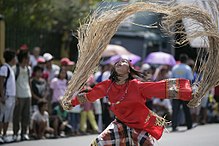
Indigenous
The "negative" counterparts of
Sacred grounds
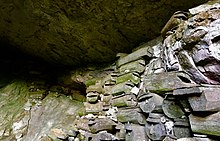
Ancient Filipinos and Filipinos who continue to adhere to the indigenous Philippine folk religions generally do not have so-called "temples" of worship under the context known to foreign cultures.
During certain ceremonies, anito are venerated through temporary altars near sacred places. These were called latangan or lantayan in Visayan, and
Other types of sacred places or objects of worship of diwata include the material manifestation of their realms. The most widely venerated were
Many ethnic peoples in the country have a shared "mountain worship culture", where specific mountains are believed to be the abodes of certain divinities or supernatural beings and aura. Mythical places of worship are also present in some mythologies. Unfortunately, a majority of these places of worship (which includes items associated with these sites such as idol statues and ancient documents written in
In traditional dambana beliefs, all deities, beings sent by the supreme deity/deities, and ancestor spirits are collectively called
Status and adherence
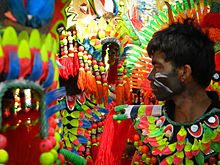
In 2014, the international astronomical monitoring agency Minor Planet Center (MPC) named Asteroid 1982 XB 3757 Anagolay, after the Tagalog goddess of lost things, Anagolay.[67] In 2019, the International Astronomical Union (IAU) named star Wasp 34 as Aman Sinaya, the Tagalog deity of the ocean, while planet Wasp 34-b was named as Haik, a Tagalog sea god.[68] On the same year, the world's largest caldera was named as the Apolaki Caldera, after the god of sun in various indigenous religions in Luzon.[69] In 2021, three bridges in Albay were named after three heroes from the Bicolano religious epic, Ibalon, namely Baltog, Handyong, and Bantog.[70]
In accordance to the National Cultural Heritage Act, as enacted in 2010, the Philippine Registry of Cultural Property (PReCUP) was established as the national registry of the Philippine Government used to consolidate in one record all cultural property that are deemed important to the cultural heritage, tangible and intangible, of the Philippines. The registry safeguards a variety of Philippine heritage elements, including oral literature, music, dances, ethnographic materials, and sacred grounds, among many others.[71] The National Integrated Protected Areas System (NIPAS) Law, as enacted in 1992 and expanded in 2018, also protects certain Anitist sacred grounds in the country.[72]
The indigenous Philippine folk religions were widely spread in the archipelago, prior to the arrival of Abrahamic religions. The majority of the people, however, had converted to Christianity due to Spanish colonization from the 16th to the late 19th century, which continued through the 20th century during and after American colonization.[11][54] During the Philippine Revolution, there were proposals to revive the indigenous Philippine folk religions and make them the national religion, but the proposal did not prosper, as the focus at the time was the war against American colonizers.[73]
The Philippine Statistics Authority notes in the 2020 national census, that 0.23% of the Filipino national population are affiliated with indigenous Philippine folk religions, which they wrote as "tribal religions" in their census.
See also
- Indigenous religious beliefs of the Tagbanwa people
- Indigenous religious beliefs of the Tagalog people
- Diwata
- Folk Christianity
- Gabâ
- List of water deities of Philippines
- Souls in Filipino cultures
- Philippine shamans
- Philippine witches
- Pagtatawas
- Philippine mythology
Notes
- Bagoboas buis (for those built near roads and villages) and parabunnian (for those built near rice fields).(Kroeber, 1918)
- Bagobo)
References
- ^ a b Almocera, Ruel A., (2005) Popular Filipino Spiritual Beliefs with a proposed Theological Response. in Doing Theology in the Philippines. Suk, John., Ed. Mandaluyong: OMF Literature Inc. Pp 78-98
- ^ a b c d Maggay, Melba Padilla (1999). Filipino Religious Consciousness. Quezon City: Institute for Studies in Asian Church and Culture.
- ^ ISBN 9711002558.
- ^ ASIN B007FR4S8G.
- ^ a b "Religious Affiliation in the Philippines (2020 Census of Population and Housing)". Philippines in Figures. Quezon City, Philippines: Philippine Statistics Authority. February 22, 2023. Retrieved March 25, 2023.
- ^ (PDF) from the original on October 11, 2016. Retrieved August 15, 2016.
- ^ ISBN 971-550-135-4.
- ISBN 1-74114-448-5.
- ^ Antonio Sánchez de la Rosa (1895). Diccionario Hispano-Bisaya para las provincias de Samar y Leyte, Volumes 1-2. Tipo-Litografia de Chofre y Comp. p. 414.
- ^ Frederic H. Sawyer (1900). The Inhabitants of the Philippines. Charles Scribner's Sons.
- ^ ISSN 0004-4679.
- ^ a b c Gaverza, Jean Karl M. (January 2014). The Myths of the Philippines (Undergraduate Thesis). Quezon City: University of the Philippines Diliman – via www.academia.edu.
- ^ Celino, Sonia M. (1990). Death and Burial Rituals and Other Practices and Beliefs of the Cordillerans (Dissertation) (Thesis). University of Baguio.
- ^ Gatan, R. M. (1981). Ibanag Indigenous Religious Beliefs . Manila: Centro Escolar University Research and Development Center.
- ^ JSTOR 42633258.
- ISSN 0859-9920.
- ^ McCoy, A. W. (1982). Baylan: Animist Religion and Philippine Peasant Ideology. University of San Carlos Publications.
- ^ Pangcoga, Jehad Zacaria (March 18, 2014). "The Okir (Motif): An Art of Marano Depicting Their Culture and Society".
- ^ "Alab Village: Mysteriously Ancient Destination in Bontoc". Choose Philippines. July 8, 2021.
- ^ a b "The Hidden Myth Behind the Symbolism of the Anting-Anting". May 27, 2018.
- ^ a b c d "The Beautiful History and Symbolism of Philippine Tattoo Culture". May 4, 2017.
- ^ a b "PANG-O-TÚB: The Traditional Philippine Tattooing You Haven't Heard About". June 21, 2019.
- ^ "CULTURE & TRADITION: Phalluses and Phallic Symbols of the Philippines". December 5, 2018.
- ^ "PHILIPPINE MYTHOLOGY: Similarities and Parallels to World Mythologies". April 9, 2019.
- ^ "The Egg Motif in Philippine Creation Myths". February 22, 2019.
- ^ "The Theme of Resurrection in Philippine Epic Tales". May 23, 2019.
- ^ "6 Guidelines for Becoming a Filipino Shaman". December 4, 2016.
- ^ "Notrs on the Medical Practices of the Visayans, 1908". June 29, 2019.
- ^ a b "Ancient Philippines: Rituals for Land, Weather and Sailing". November 30, 2017.
- ^ Nalangan, Gladys P. "Pagmamaman: A World Culture Experience and Dumagat Lifestyle" – via www.academia.edu.
- ^ "Ifigao Divinities: Philippine Mythology & Beliefs". November 28, 2018.
- ^ "VISAYAN Class Structure in the Sixteenth Century Philippines". June 16, 2018.
- ^ "Mermaids, Mermen and Sirens – Sea Spirits that Protect and Destruct".
- ^ "Lighting The Forge: Examining the Panday from the Pre-Colonial Era". January 11, 2018.
- ^ Limos, Mario Alvaro (March 18, 2019). "The Fall of the Babaylan". Esquiremag.ph.
- ISBN 978-9711005245.
- ISBN 9789711003302.
Anito: 16th century Tagalog and Visayan (according to Spanish records): an idol or deity inhabiting the idol, also maganito: a ceremony for such idols, and anitero: (Sp.) witch doctor, shaman.
- ISBN 978-971-8605-29-5.
A more general terminology that seems be used throughout the archipelago is based on the signifier for the spirit anito. These include maganito and anitera.
- hdl:10125/62485.
The maganito went by several different names throughout the islands depending on linguistic groups, such as the babaylan, but the term maganito and similar variations appear to be a more universal of a term in Spanish colonial sources. Because of this universality and its indigenous origins, the term maganito will be used as a general term to describe all the animist shaman missionaries came into contact with in the sixteenth and seventeenth centuries.
- ^ a b "Philippine Sorcery 101: 6 Methods and How to Counter Them". September 5, 2019.
- ISBN 978-1-84540-333-1.
- JSTOR 29791795.
- ISBN 978-0-415-94124-2.
- ^ McClenon, James (1985). "Island of Sorcerers". Fate. 38 (9): 37–41.
- ISBN 9789715425704.
- ISBN 9780520034204.
- ^ a b Ferdinand Blumentritt (1894). "Alphabetisches Verzeichnis der bei den philippinischen Eingeborenen üblichen Eigennamen, welche auf Religion, Opfer und priesterliche Titel und Amtsverrichtungen sich beziehen. (Fortsetzung.)". Wiener Zeitschrift für die Kunde des Morgenlandes. Vol. 8. Orientalisches Institut, Universität Wien. p. 147.
- ^ Madale, N. T. (2003). In Focus: A Look at Philippine Mosques. National Commission for Culture and the Arts.
- ^ NCID BA91351726.
- ^ OL 7134925M.
- ISBN 9781351904780.
- ISBN 9780244348731.
- ^ Teodoro A. Agoncillo & Oscar M. Alfonso (1969). History of the Filipino People. Malaya Books. p. 42.
- ^ ISSN 0004-4679.
- ^ Blair, Emma Helen; Robertson, James Alexander, eds. (1903). Relation of the Conquest of the Island of Luzon. The Philippine Islands, 1493–1898. 3. Ohio, Cleveland: Arthur H. Clark Company. p. 145.
- ^ "Pre-colonial Manila – Presidential Museum and Library". Archived from the original on March 9, 2016. Retrieved August 31, 2020.
- ^ Blair, Emma Helen; Robertson, James Alexander, eds. (1903). Relation of the Conquest of the Island of Luzon. The Philippine Islands, 1493-1898. 3. Ohio, Cleveland: Arthur H. Clark Company. p. 145.
- ^ Ocampo, Ambeth R. (September 12, 2014). "History in language". opinion.inquirer.net.
- ^ Orejas, Tonette (April 27, 2018). "Protect all PH writing systems, heritage advocates urge Congress". newsinfo.inquirer.net.
- ^ "Pre-colonial Manila | Presidential Museum and Library". Archived from the original on March 9, 2016. Retrieved August 31, 2020.
- ^ [1][dead link]
- ^ Elefante, Fil V. (June 12, 2016). "Filipinization and the flag as amulet against bad luck". BusinessMirror.
- ^ "Dambana Meaning | Tagalog Dictionary". Tagalog English Dictionary.
- ^ Lim, Gerard (June 20, 2014). "What does it mean to be Filipino?". Rappler.
- ^ Killgrove, Kristina. "Archaeologists Find Deformed Dog Buried Near Ancient Child In The Philippines". Forbes.
- ^ "7 Prehistoric Animals You Didn't Know Once Roamed The Philippines". FilipiKnow. August 4, 2014.
- ^ "New asteroid named after Philippine goddess of lost things". GMA News Online. October 9, 2014.
- ^ "Pinoy's entry chosen as name of star, exoplanet". December 18, 2019.
- ^ "Filipina scientist discovers world's largest caldera on Benham Rise". October 21, 2019. Archived from the original on October 31, 2019.
- ^ Solis, Emmanuel (April 22, 2021). "Legazpi bridges named after Bicol's 3 epic heroes". Philippine News Agency.
- ^ "Republic Act No. 10066 Heritage Law". Ncca.gov.ph. February 17, 2015. Archived from the original on June 12, 2021. Retrieved July 20, 2019.
- ^ "Data" (PDF). www.officialgazette.gov.ph. 2018. Retrieved July 20, 2019.
- JSTOR 25105201.
- JSTOR 43854732.
External links
- Filipino Folk Tales
- Filipino Folk Medicine - An early 18th century collection of Filipino Folk Medicine.
